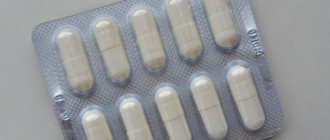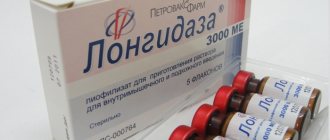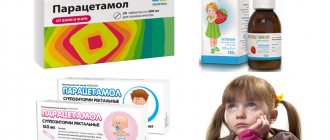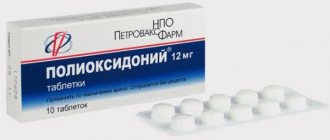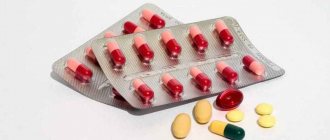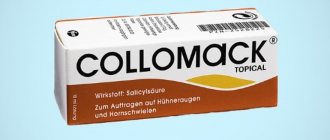Cycloferon is a popular domestically produced antiviral drug that increases the body’s resistance. It is a high-molecular activator of interferon formation and has a wide range of pharmacological activity.
The high therapeutic activity of the drug is due to the spectrum of biological action. It is effective in the treatment of diseases of a viral nature, including influenza; it is also practiced to prescribe cycloferon for some bacterial infections as an immunostimulant. Traditionally used for immunodeficiencies of varying severity, including HIV infection. It is characterized by an anticarcinogenic effect and suppresses the development of autoimmune reactions, which further expands the therapeutic spectrum of the drug.
Cycloferon has been present on the pharmaceutical market for more than 20 years, has an affordable price in its segment and is the drug of choice for immunodeficiencies, as well as for diseases of a viral nature.
Composition, physical and chemical properties, price
The drug is produced in 3 dosage forms: liniment for local external use, oral tablets and parenteral solution.
| Tablets Cycloferon/150 mg | Solution 12.5% in ampoules | Liniment 5% | |
| Main substance | Meglumine acridone acetate – 150 mg per tablet | Meglumine acridone acetate – 125 mg per 1 ml | Meglumine acridone acetate – 50 mg per 1 ml |
| Auxiliary components | Povidone - 7.93 mg, propylene glycol - 1.79 mg, calcium stearate - 3.07 mg, polysorbate - 0.27 mg, methacrylic acid and ethyl acrylate copolymer - 23.21 mg, hypromellose - 2.73 mg | Water for up to 1 ml volume | Benzalkonium chloride - 0.1 mg, up to 1 ml of 1,2-propylene glycol |
| Physico-chemical properties | Yellow, biconvex, round, enteric-coated tablets | Transparent, yellow solution | Yellow transparent liquid with a specific odor |
| Package | 10 and 20 tablets each. in blister packs, cardboard packs. | 2 ml in ampoules made of brown or transparent glass, placed in blister packs and cardboard packs. | 5 and 30 ml in tubes, 30 ml dosage - with vaginal applicators. In cardboard packages. |
| Appearance | |||
| Price | No. 10: 145-190 rub. | No. 5: 300-350 rub. | 30 ml: 380-400 rub. |
Additional recommendations
Ampoules with Cycloferon are suitable for use for three years from the date of production. This drug is classified as “B” list, that is, it does not change its therapeutic characteristics when frozen. Store ampoules only in a place that is inaccessible to children and protected from light. The medicine is sold from pharmacies only with a doctor's prescription.
In the event that a precipitate has appeared in the ampoules with the solution or the shade of the medicine has changed, then the use of such a medicine is simply unacceptable. Normally, the product is a yellowish transparent liquid without any impurities.
This is confirmed by the instructions for Cycloferon injections.
pharmachologic effect
Cycloferon has 2 pronounced effects: antiviral and immunomodulatory, as well as anti-inflammatory, antiproliferative (suppresses excessive cell growth) and antitumor effects. In the body, meglumine acridone acetate potentiates the synthesis and accumulation of significant titers of interferons α and β in organs and tissues. At the same time, the highest content of interferons is observed in structures rich in lymphoid tissue: spleen, lungs, intestinal mucosa, liver.
Cycloferon activates bone marrow stem cells and ensures the formation of granulocytes. Normalizes the ratio of T-suppressors, which suppress the formation of antigens, and T-helpers, which enhance the adaptive immune response. Activates killer cells and T-lymphocytes. This effect is especially important for immunodeficiencies of various natures, since it leads to correction of the immune status. Penetrates into brain tissue.
Thus, cycloferon:
- leads to a pronounced improvement in common viral diseases such as influenza, herpes, enterovirus infection, and in less common pathologies: tick-borne encephalitis, hepatitis, cytomegalovirus and papillomatous infections;
- normalizes the immune status of HIV-infected people;
- has antimicrobial and antichlamydial effects;
- prevents the start of tumor processes due to antimetastatic and anticarcinogenic effects;
- suppresses autoimmune reactions, thereby reducing the severity of pain and inflammation in rheumatic diseases and systemic pathologies of connective tissue;
- causes an improvement in the balance of immunity; when applied topically, it is characterized by an antiproliferative effect and rapid elimination of inflammation.
Pharmacokinetics
After oral administration, it reaches maximum plasma concentration within 2-3 hours. Gradually, the concentration of the drug decreases and after a day cycloferon is found in the body in residual quantities.
The half-life is 4-5 hours. At therapeutic dosages, accumulation of meglumine acridone acetate is not observed.
Opinion of patients who tried the drug
Most people who have been treated with Cycloferon speak positively about this drug. However, there are angry reviews online because the therapy was ineffective or the effect was weak.
The medication may not provide the desired result if the patient took a course with violations and did not complete it. Once you feel better, you should not stop therapy, as symptoms will return over time.
The correct dosage of the drug is also of considerable importance. Changing the dose size on your own, as well as violating the drug administration schedule, is prohibited.
Cycloferon practically does not cause the side effects that many other interferons lead to, but you should realize that each organism is unique, and the reaction to substances ingested is also different, sometimes it is unpredictable.
Some reviews report a significant increase in body temperature, rashes and other allergic manifestations. If you notice side effects of the medication, immediately inform the doctor who prescribed the treatment and is monitoring your condition. If necessary, the doctor will select another drug or change the daily dosage of Cycloferon.
Indications
Tablets are prescribed as part of complex therapy in adults for:
- influenza and acute respiratory infections;
- herpes;
- AEI of viral etiology;
- neuroinfections, including tick-borne borreliosis and encephalitis, serous meningitis;
- secondary immunodeficiency due to chronic infections caused by fungi and bacteria;
- hepatitis C and B (chronic);
- HIV infection in stages 2A-3B;
In children, cycloferon tablets are used as part of complex therapy for:
- infections of herpetic etiology;
- hepatitis C and B (both acute and chronic);
- HIV infection in stages 2A-3B;
- viral intestinal infections;
- Acute respiratory infections and influenza, as well as to prevent them.
The solution, as a complex therapy drug, is indicated for the treatment of adult patients with the following conditions:
- HIV infection in stages 2A-3B;
- hepatitis C, D, A, B;
- systemic connective tissue diseases and rheumatic diseases (rheumatoid arthritis, SLE);
- neuroinfections, incl. for tick-borne borreliosis and encephalitis, serous meningitis;
- infections caused by cytomegalovirus and herpes virus;
- secondary immunodeficiency due to fungal and bacterial infections, acute and chronic;
- chlamydial infections;
- pathologies of joints (degenerative-dystrophic), incl. with deforming osteoarthritis.
In children over 4 years of age, parenteral use of cycloferon is indicated for:
- viral hepatitis C, A, D, GP and B;
- HIV infection (stage 2A-3B);
- herpetic infection.
Liniment cycloferon is a component of complex therapy and is used topically in adults for:
- herpetic infection;
- nonspecific vaginosis and bacterial vagititis;
- specific urethritis (gonorrheal, candidal, chlamydial, trichomonas), balanoposthitis, as well as nonspecific urethritis.
Side effects and contraindications
The medicine should not be used if you are hypersensitive to the components and active substance. Among the main contraindications mentioned by the manufacturer:
- cirrhosis;
- acute or chronic liver failure;
- the appearance of an allergic reaction;
- pregnancy.
Cycloferon can be used with caution for diseases of the gastrointestinal tract. It can disrupt the functioning of the endocrine system and exacerbate hormonal disorders.
Instructions for use of cycloferon
Tablets, for adults
The drug is taken once a day, half an hour before meals, without crushing and with water. The dose depends on the disease and age.
- Herpetic infection. In a dose of 2-4 tablets. according to the scheme: on the 1st, 2nd, 4th, 6th, 8th, 11th, 14th, 17th, 20th and 23rd days - this is a basic scheme suitable for most pathologies. For a course of treatment – 20-40 tablets. Treatment is started when the disease worsens;
- ARI and influenza. Adults: 2-4 tablets. once a day, 10-20 tablets. on the course from the first symptoms. For severe flu, the single dose is increased to 6 tablets. Other drugs are also prescribed for symptomatic treatment (antipyretics, etc.);
- Chronic hepatitis C and B. 4 tables each. according to the basic scheme, then - 4 tables. once every 3-5 days for about 3.5 months. The course requires 100-150 tablets. When treating hepatitis C or mixed infection, repeated courses are prescribed, in combination with other antiviral drugs and interferon;
- Intestinal infections (as a component of complex treatment): 2 tables. for reception according to the basic regimen until the 8th day, and from the 11th - 4 tablets;
- Neuroinfections. In a dose of 4 tablets. according to the basic scheme, then - 4 tables. in 5 days. The course of treatment is 2.5 months;
- HIV infection. In a dose of 4 tablets. according to the basic regimen, then at the same dose 1 time every 3-5 days for 2.5 months. After 2-3 weeks the course is repeated (the course takes 100-150 tablets);
- Immunodeficiencies. 2 tables each according to the basic scheme.
How to take cycloferon in childhood
The drug is taken once a day, half an hour before meals, with water.
- Children 4-6 years old: 1 tablet per appointment;
- Children 7-11 years old: 2 tablets per appointment;
- Children over 12 years old: 3 tablets per appointment.
The treatment regimen depends on the pathology:
- Acute viral hepatitis C, B: the recommended dose for age is twice every 1 day, then switch to three doses after 48 hours, and then 5 doses every 72 hours;
- Chronic viral hepatitis C and B: in recommended doses by age after 48 hours, 50-150 tablets per course;
- HIV infection: age dose for 1, 2, 4, 6, 8, 11, 14, 17, 20 days, then according to the maintenance regimen once every 3-5 days for about 5 months;
- Herpetic infection: 1, 2, 4, 6, 8, 11, 14 days - in an age-specific dose, then - based on the severity of the pathology;
- Intestinal infections: once a day. at an age-specific dose on days 1, 2, 4, 6, 8, 11 (6-18 tablets per course);
- Influenza and acute respiratory infections: in age-specific doses at daily intervals, 5-9 doses of cycloferon per course of treatment;
- During an unfavorable situation regarding influenza and other acute respiratory viral infections, for their prevention: an age-specific dose, which is taken on days 1, 2, 4, 6, 8, then another 5 times after 72 hours. Preventive course: 10-30 tablets.
Scheme for the use of cycloferon injections in adults
The solution is administered intravenously or intramuscularly once a day. according to the basic scheme: on days 1, 2, 4, 6, 8, 11, 14, 17, 20, 23, 26, 29. The dose depends on the pathology.
- Viral hepatitis B, A, D, C. Single dose - 250-500 mg, per course the total total dose is 2.5-5 g. A total of 10 injections are prescribed, every 2 weeks. the course is repeated;
- Infections associated with herpes and cytomegalovirus: 10 injections of 250 mg (total dose per course 2.5 g). It works most effectively when treated at the very beginning of an exacerbation;
- Neuroinfections. 12 injections at a dose of 250-500 mg. Treatment is combined with etiotropic therapy. Total dose: 3-6 g. Repeated treatment is allowed;
- HIV infection. A single dose is 500 mg, administered intramuscularly in 10 injections according to the basic regimen. Maintenance treatment prescribed after the course: 500 mg once every 5 days for 2.5 months. 30 days after completion - repeat therapeutic course;
- Chlamydial infections. 250 mg, 10 injections per course. Repeated treatment is carried out after 2 weeks. after completing the course. In this case, it is recommended to use cycloferon together with antibiotics;
- Immunodeficiency states. 250 mg intramuscularly, 10 injections. After 6-12 months. repeated course recommended;
- Systemic connective tissue pathologies and rheumatic diseases. 5 injections over 4 courses (every 10-14 days), in a single dose of 250 mg. Repeated courses are prescribed by a doctor;
- Diseases of the musculoskeletal system of a degenerative-dystrophic nature. 250 mg - 2 courses of 5 injections, with an interval of 10-14 days;
Scheme for the use of cycloferon injections in children
The dose of cycloferon solution is calculated individually: 6-10 mg/kg of the child’s body weight. Administered intramuscularly or intravenously, once a day.
- Acute hepatitis B, C, A, GP, D and mixed forms: dose based on body weight, administered on 1, 2, 4, 6, 8, 10, 12, 14, 16, 18, 20, 22, 24, 26, 28 days. In case of prolonged infection, repeat the same scheme after 14 days;
- Chronic hepatitis C, B, GP, D. Dose according to body weight, which is administered on days 1, 2, 4, 6, 8, 10, 12, 14, 16, 18, then a maintenance regimen is prescribed for 3 months, 1 injections after 3 days;
- HIV infection. Administered according to the treatment regimen for chronic hepatitis, then: maintenance regimen once every 5 days for 3 months;
- Herpetic infection. The dose calculated per weight is administered on days 1, 2, 4, 6, 8, 11, 14, 17, 20, 23, then to maintain the effect: 1 injection every 5 days.
Cycloferon regimen - local application
- Herpetic infection. Liniment is applied to the affected area in a thin layer, once a day, for 5 days. For genital herpes, daily intraurethral or intravaginal instillations of 5 ml of liniment (1 bottle) are done once a day. 10-15 days. Liniment can be combined with other general and local antiherpetic agents;
- Candidiasis, nonspecific urethritis. Instill 5-10 ml of liniment (volume 1-2 bottles) into the urethra. The dose varies depending on the severity of the lesion. when inflammation develops in the anterior urethra in men, the cannula of a syringe with liniment is immersed in the external opening of the canal, then the opening is gently compressed for 1.5-3 minutes. The instillation solution is released by gravity after some time. You need to urinate after half an hour (otherwise swelling of the mucous membrane may develop).
- if the seminal glands or posterior urethra are affected, intraurethral instillation of liniment is performed using a urethral catheter, 5-10 ml for 10-14 days in a row, once a day.
- when treating specific urethritis, it is necessary to use antibacterial agents to which pathogenic flora is sensitive.
Liniment is combined with vaginal forms of drugs (suppositories, tablets), so it can be used in combination for chronic pathology of the female genital area.
The treatment regimens proposed above are basic and may vary on an individual basis.
About the drug
"Cycloferon" in injections is considered a medicinal product that has a large number of different healing properties. It is used as an immunoregulatory, antimicrobial, radioprotective, and antitumor drug. In the human body, this remedy can linger for a maximum of seventy-two hours. A positive property of “Cycloferon” in ampoules is the fact that it can be prescribed to adults and children for the treatment of viral hepatitis, influenza, ARVI, meningitis, AIDS, etc. This drug improves immunity in people suffering from cancer, dermatology, venereal, gynecological and somatic pathology.
In recent years, more and more scientists have been paying attention to this medical product, or rather its effect on the human body. For example, in the centers for the prevention and control of such diseases as AIDS, special treatment regimens using Cycloferon were developed. Scientists have even begun to think about making a special form of this drug that will help protect two sexual partners from HIV infection.
Quite often this remedy is used in the treatment of children. In addition to the treatment of ARVI, hepatitis and HIV infection, this drug can also fight such ailments as herpes, toxoplasmosis, otolaryngological diseases, bronchial asthma, intestinal diseases, and autoimmune diseases in children. This remedy can be safely given to children as a preventative medicine that will protect the baby from a large number of various diseases.
Against the flu
Russian doctors recommend that all people who travel a lot during various influenza outbreaks use Cycloferon for prevention and to strengthen their body. Moreover, this drug allows people to protect themselves not only from the flu. For example, in some North African countries there are local infections that are difficult to treat and can even lead to death. Cycloferon can save you from most local viruses.
In order to avoid contracting a local infection, many travel agencies even issue reminders for those people who are going to spend their holidays in an exotic country. The memo states that when traveling to Asian countries, it is not recommended to come into close contact with animals and birds, because they very often carry extremely dangerous diseases. You should also drink only bottled water or well-boiled liquid. If, during a trip or immediately after a trip, a person feels that his temperature has increased to more than 38 degrees, and at the same time there is migraine-like pain and, in addition, a sore throat, then this is the first sign of the appearance of a viral disease in the body. You should immediately take a dose of the drug "Cycloferon" or perform an injection of this medication.
You should not use any other medicines without consulting a doctor, so you should immediately contact a specialist. It will help quickly and most importantly effectively cure the disease. Aspirin should not be used during the flu. It is better to take a large dosage of a dietary supplement that includes vitamin C to support immunity.
special instructions
If the patient has aggravated diseases of the digestive system , and also experienced allergic reactions , before taking Cycloferon, you must tell your doctor about this.
Patients suffering from thyroid diseases should use this drug only with constant monitoring of their health by an endocrinologist. How often you can take pills in this case is also determined by a specialist.
If the dosage regimen was disrupted due to a missed dose, you should continue the regimen at the first opportunity by taking the next dose.
If there is no positive effect during the treatment process, you should definitely consult a specialist.
Taking the drug does not affect the ability to drive vehicles and operate complex machinery.
Often patients have a question about whether it is an antibiotic or not. It should be clearly understood that Cycloferon is not an antibiotic and cannot replace antibacterial drugs if necessary.
Cycloferon for cats and other animals can only be used as directed by a veterinarian and according to the regimen prescribed by him.
